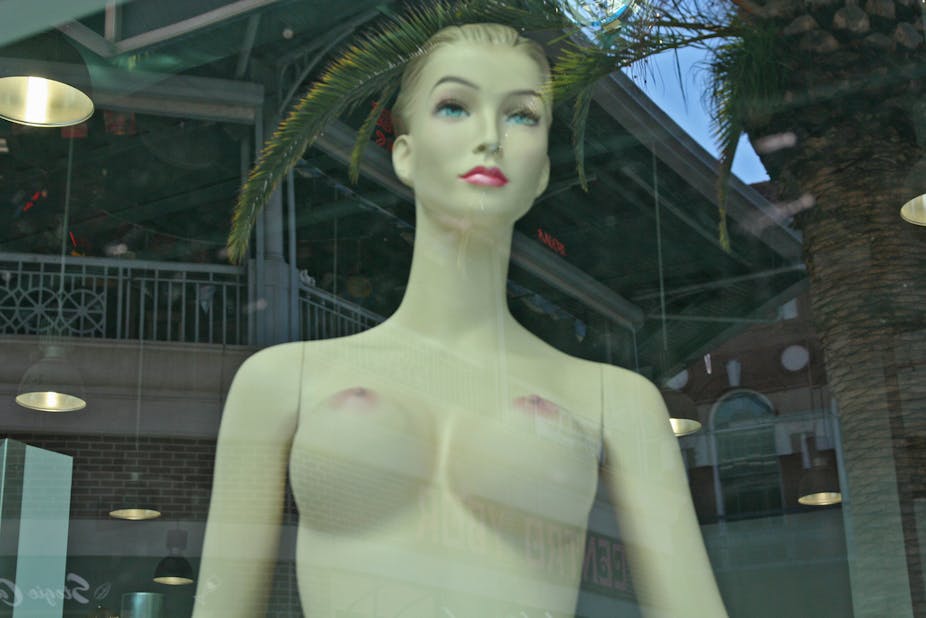The number of cosmetic surgery operations in the UK hit 50,000 a year for the first time in 2013. This is worrying given that the Keogh review into the industry following the PIP scandal, which saw thousands of women given potentially dangerous breast implants filled with industrial silicone, found it was woefully under-regulated.
The number of people undergoing operations will actually be much higher, as the British Association of Aesthetic Plastic Surgeons (BAAPS), which released the figure, only reports procedures carried out by its members. But it does suggest that the scandal may not have dampened demand for breast surgery. According to BAAPS it is the most popular cosmetic procedure with some 11,000 breast augmentations performed in 2013, followed by eyelid and face lifts.
But claims that the increasing uptake of cosmetic surgery is a sign of a recovering economy express a dubious causality. Rajiv Grover, president of BAAPS said the increase was an “economic yardstick for recovery” because people spend more when they are confident in their money. But it might be that when jobs are scarce and competition fierce, looking good becomes all the more important, and cosmetic procedures become an investment in what you might call “body capital”.
We need to get figures into shape
BAAPS claims to represent a third of all cosmetic surgeons working in the UK, its representatives argue that the figures released show general trends in procedures from its members’ reported data – yet only certain procedures are registered.
Hair transplants and cosmetic dentistry, for example aren’t recorded, so the number of men having cosmetic procedures is underestimated. But from our own recent research on cosmetic surgery tourism, a third of all patients travelling abroad for cosmetic procedures were men.
The fact that we don’t have full and accurate figures for the numbers undergoing surgery tells us that we’re still far from understanding – or regulating – this industry.
And as the Keogh review said:
To make matters worse, some doctors performing these operations are not based in the UK – they fly in to perform the procedure and then fly out.
Going under the knife
In our study, which explored motives for surgery through 105 in-depth interviews with recipients in the UK, Australia and China, we found patient-consumers spent a lot of time researching their surgeries and choosing their doctors. But very little objective information exists on which to base these choices. Instead patients most often use word of mouth.
Clinic websites were not seen as particularly trustworthy, but social networking sites and cosmetic surgery forums provide opportunities for patient-consumers to talk to and get advice from previous patients of particular surgeons or clinics. They are a space where patients can record bad experiences as well as good ones.
A number of reasons also emerged for having cosmetic surgery, very few of which were related to “celebrities” or “perfect bodies” in the ways we often see insinuated in the media. The reasons that were most often cited in our study were:
Correction: young women and men who wanted ear pinning, nose reshaping, breast surgery for symmetry, breast reduction for very large breasts or gynecomastia (benign growth of breast tissue in men), and breast enlargement when very little or no breast tissue was present.
Investment: it was young women who largely seek breast enlargements. Often the experience of having had cosmetic surgery was more important than the end result because it was seen to mark success or add “value” and “visibility” to bodies for those in competitive job markets. In South Korea, where cosmetic surgery is very big business, “small face” or jawbone “shaving” for women and blepharoplasty (eye-widening) as a graduation present for women and men are popular.
Repair: this was usually post-pregnancy breast uplifts and “tummy tucks” (these were also popular surgeries with women and men who had experienced dramatic weight loss), vaginal “rejuvenation” (often masking repair to birthing injury), and repair to other sudden body traumas – scar removal or sporting (or fighting) injuries to ears and noses.
Anti-ageing: fairly gender neutral, including face/neck/browlifts, blepharoplasty (an eyelid procedure) and hair transplants. These were often framed in terms of “remaining competitive”. Other people compared their bodies to homes with cracks in the walls and leaking roofs, which they wouldn’t let deteriorate in the name of “growing old gracefully”.
Class and credit
Many people share the desire for better bodies for the reasons outlined above. But roles in the workplace and class also play a part. Those with little workplace experience, or people working in jobs where interaction with the public was very important – sales assistants, receptionists and beauticians, for instance – appearance and self-presentation may be key to getting a job in a highly competitive market.
But for middle-class professionals who are highly valued in their careers, what they look like is less important. Many prefer the idea of “natural beauty” because historically this was seen as god-given and therefore emblematic of being morally good.
So “enhancements” can be deceptive, especially if you see beauty as an exploitative industry and a burden by which women – much more than men – are judged. It doesn’t mean they don’t have surgery but wealthy people can be very secretive about it, while those with less money may be more open about having surgery as a marker of social mobility but can often only afford it when credit is freely available.
And this brings us back to the idea of economic confidence once again – if numbers of cosmetic procedures are increasing then perhaps we should also think about the relaxation of credit restrictions, job competition, and not just consumer confidence. It was credit that got us into the economic crisis in the first place, let’s not forget.

